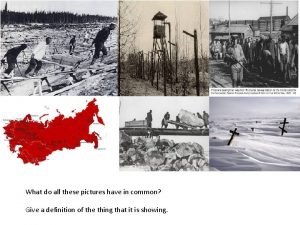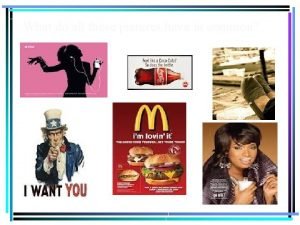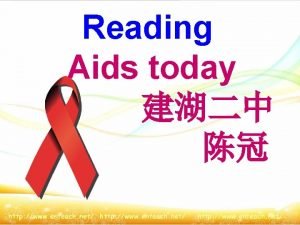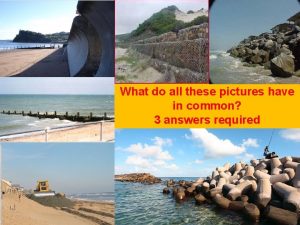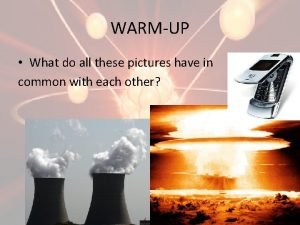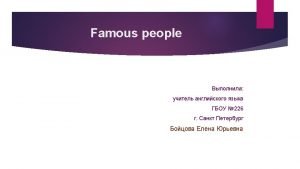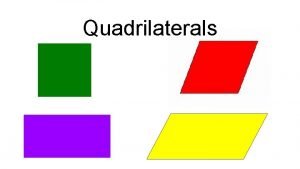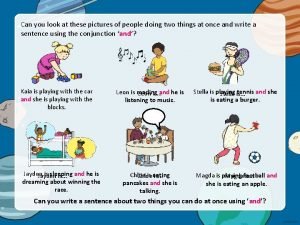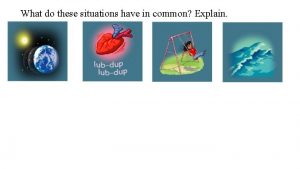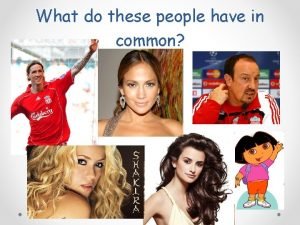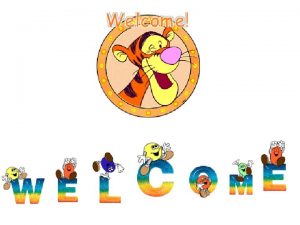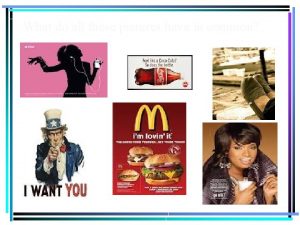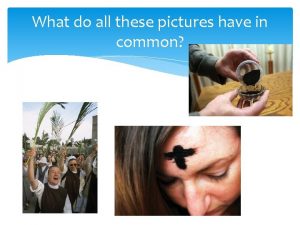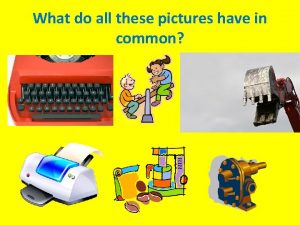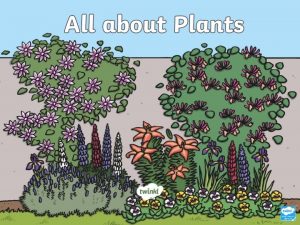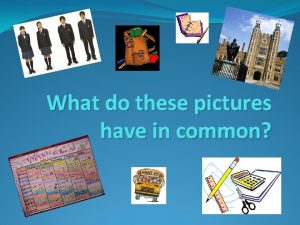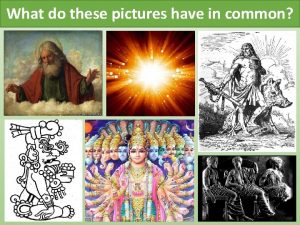What do all these pictures have in common











- Slides: 11

What do all these pictures have in common? Give a definition of the thing that it is showing.

Key features of the Purges: The Gulags. Learning Outcome: To understand the key features of the Police state and the Gulag system.

Reading task From 1923 until 1934 the police state was called OGPU. After 1934 it was called the NKVD. They encouraged people to inform on neighbours, friends, even family who spoke against the state. By 1930, the gulag labour camps had grown so much that the state needed a Gulag department to run them. In 1928 there were about 30, 000 people in all the camps. By 1938 there were 7 million people. By 1934 the Gulags took in the victims of the purges e. g. people accused of sabotage e. g. on collective farms or factories. It then included communists, teachers, engineers, industrial workers, armed forces and secret police. (a) What names were the secret police given? (b) How did the Gulags change from 1929 -1938? Give stats. (c) Who was interred in them?

Read through the information sheet

Activity You are a political prisoner who has been in several labour camps. You are desperate to tell the world what happened. Write a report covering key points below. food Accomodation The behaviour of the guards Daily life The work you have to do The conditions of work

Mini-Plenary: Explain one effect the creation of the Gulag system had on Russia. (4 marks)


Women in Stalin’s Russia Both sources show views of women in Stalin’s Russia. What were the key goals for Women?

Life in Soviet Russia The changing role of women. Learning Outcome: To evaluate the extent the role of women changed in the USSR.

Women in Stalin’s Russia. Women after the 1917 revolution. Women were equal to men. Women in Stalin’s Russia (Key features) Differences/Similarities Differences: Women had a right to an abortion if they did not want children. Free to choose in their personal and sexual relationships=free love and even unmarried life. Free to get a divorce. Women were equal in the workplace. Women had kindergartens to look after children Similarities:

Plenary How did the role of women change in Stalin’s Russia?
 What do these pictures have in common?
What do these pictures have in common? What are the things common to these pictures?
What are the things common to these pictures? What do these pictures have in common
What do these pictures have in common What is the common situation in all these images
What is the common situation in all these images What do these pictures have in common
What do these pictures have in common These pictures
These pictures Visio parallelogram
Visio parallelogram Look at the pictures and say
Look at the pictures and say These pictures should match
These pictures should match Look at the following picture and answer the question below
Look at the following picture and answer the question below What do they have in common? explain.
What do they have in common? explain. What do these people have in common
What do these people have in common
